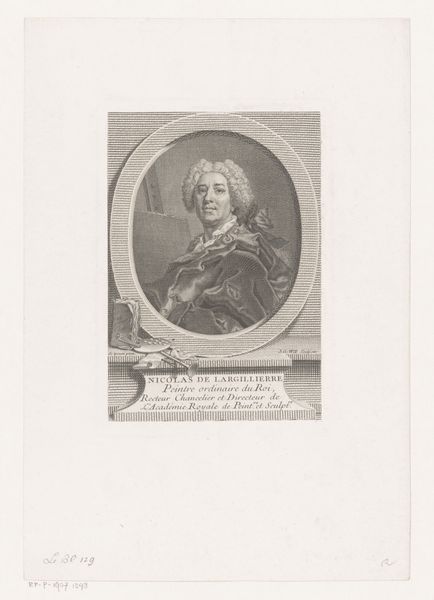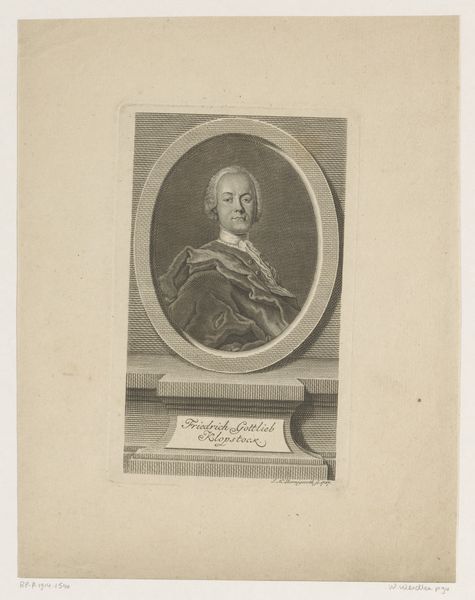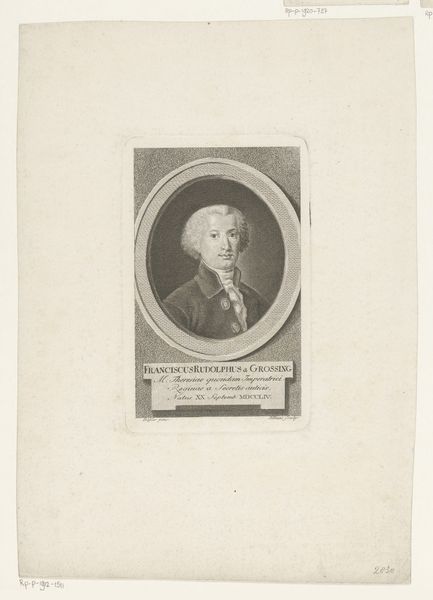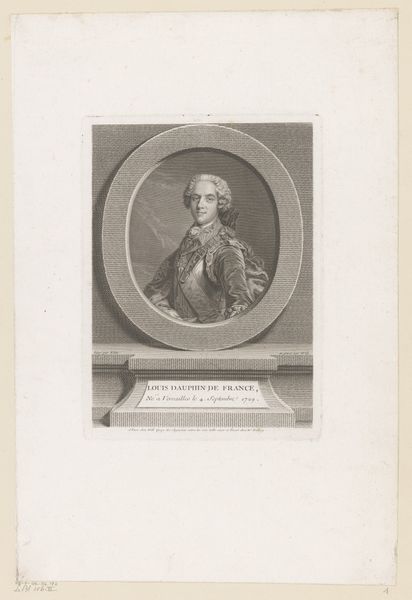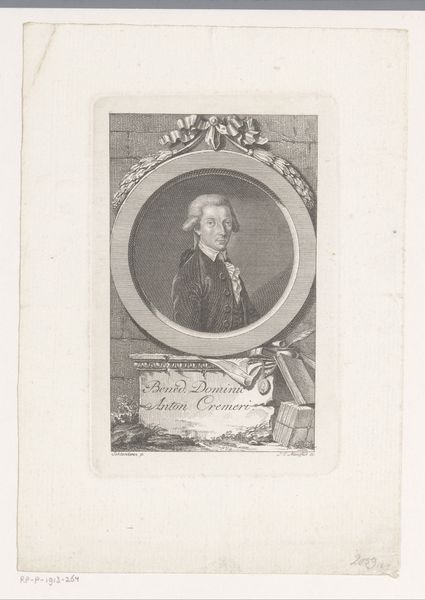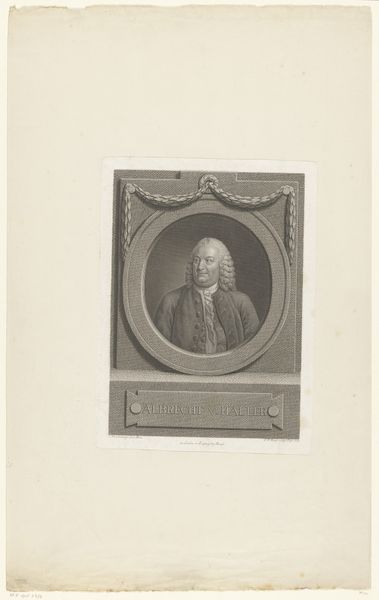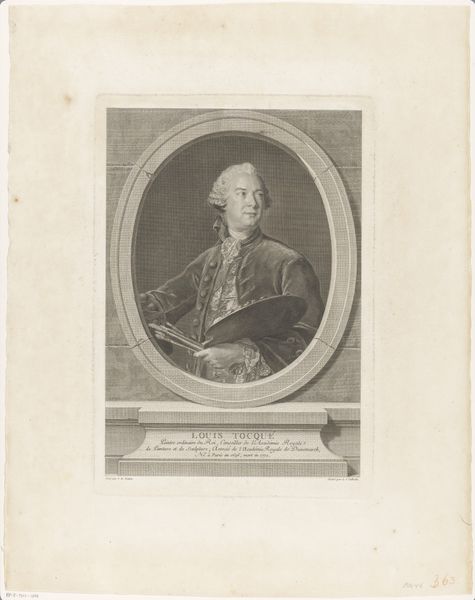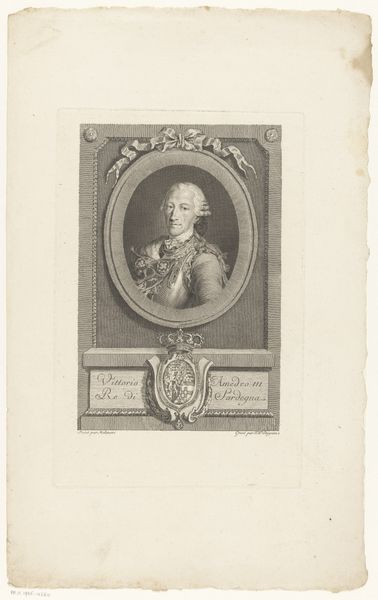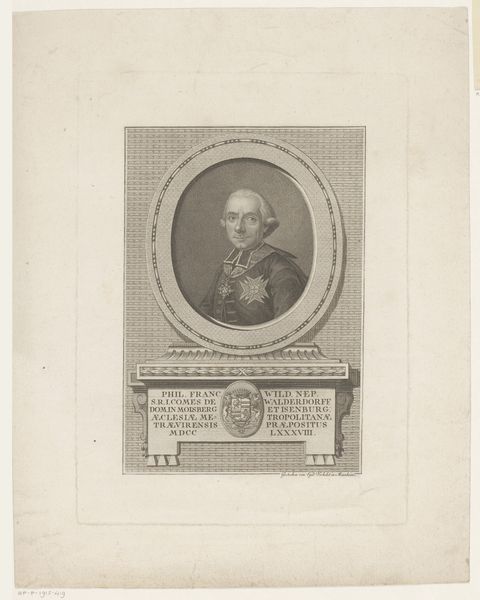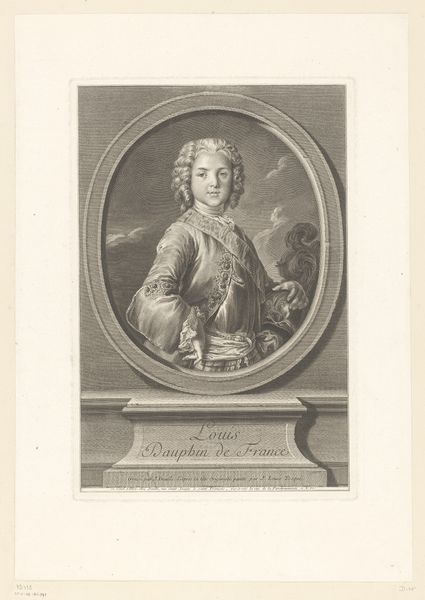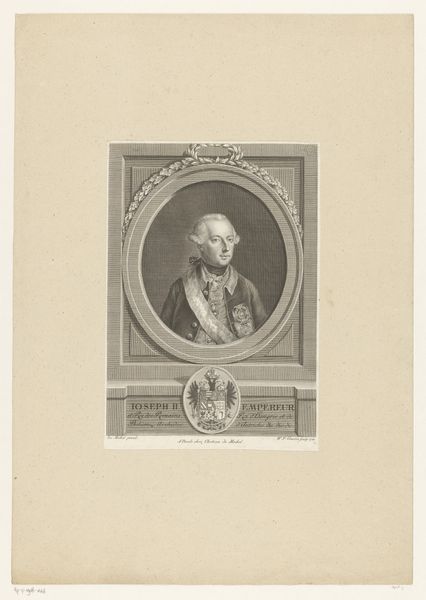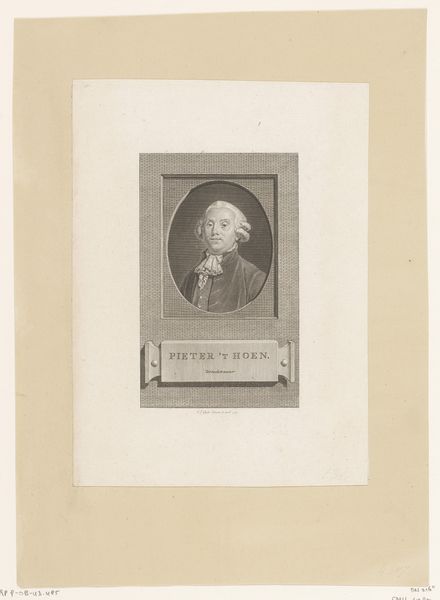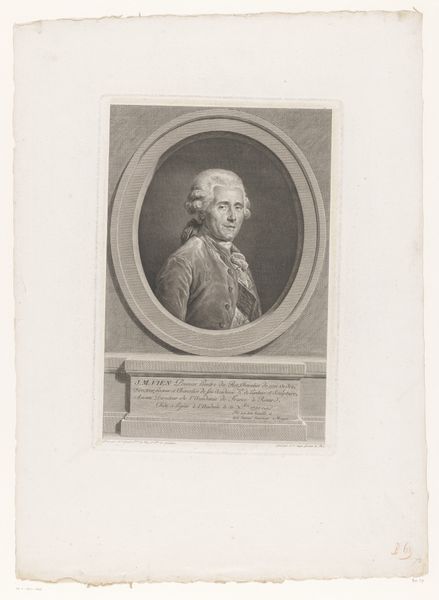
Dimensions: height 240 mm, width 175 mm
Copyright: Rijks Museum: Open Domain
This engraving of Henri Benoît Stuart was made by Johann Georg Wille, likely in the mid-18th century. It presents Stuart, son of James Stuart, in a framed portrait, complete with armor, which sits on a pedestal. The image creates meaning through specific visual codes and historical associations. Henri was a member of the Stuart family, who claimed the British throne after being deposed in 1688. The portrait then is more than a representation of an individual. It's a political statement, reflecting the ongoing tensions between the Stuart claim to the throne and the reigning Hanoverians. The armor is a nod to militarism and power. The family were Catholic, which was a significant factor in their exclusion from the British throne. Understanding art like this involves delving into historical and political contexts. Researching the Stuart dynasty, the Jacobite movement, and the religious and political climate of 18th-century Britain helps us understand the artwork's significance. The meaning of art is contingent on social and institutional context.
Comments
No comments
Be the first to comment and join the conversation on the ultimate creative platform.
